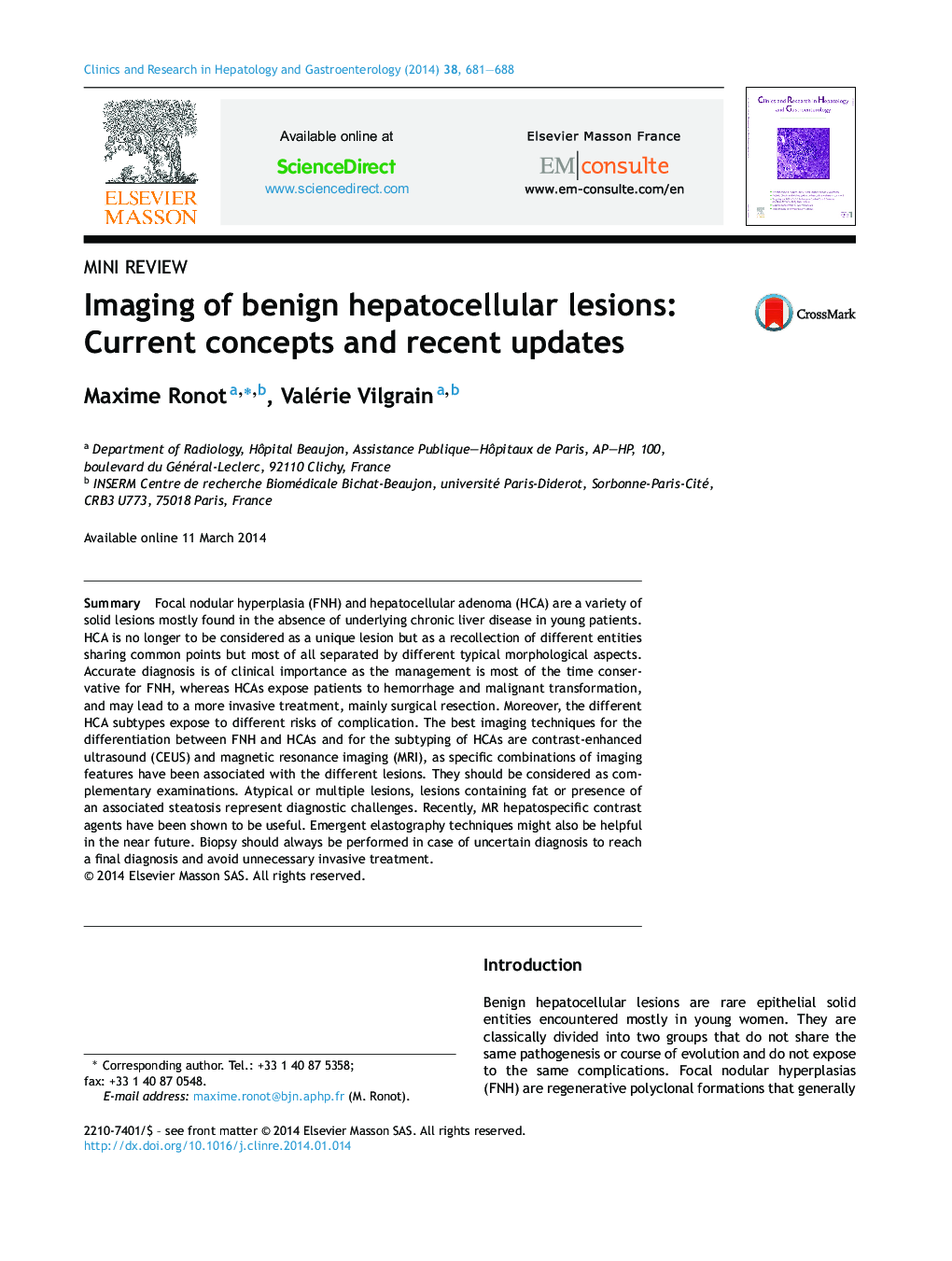| Article ID | Journal | Published Year | Pages | File Type |
|---|---|---|---|---|
| 3286140 | Clinics and Research in Hepatology and Gastroenterology | 2014 | 8 Pages |
SummaryFocal nodular hyperplasia (FNH) and hepatocellular adenoma (HCA) are a variety of solid lesions mostly found in the absence of underlying chronic liver disease in young patients. HCA is no longer to be considered as a unique lesion but as a recollection of different entities sharing common points but most of all separated by different typical morphological aspects. Accurate diagnosis is of clinical importance as the management is most of the time conservative for FNH, whereas HCAs expose patients to hemorrhage and malignant transformation, and may lead to a more invasive treatment, mainly surgical resection. Moreover, the different HCA subtypes expose to different risks of complication. The best imaging techniques for the differentiation between FNH and HCAs and for the subtyping of HCAs are contrast-enhanced ultrasound (CEUS) and magnetic resonance imaging (MRI), as specific combinations of imaging features have been associated with the different lesions. They should be considered as complementary examinations. Atypical or multiple lesions, lesions containing fat or presence of an associated steatosis represent diagnostic challenges. Recently, MR hepatospecific contrast agents have been shown to be useful. Emergent elastography techniques might also be helpful in the near future. Biopsy should always be performed in case of uncertain diagnosis to reach a final diagnosis and avoid unnecessary invasive treatment.
